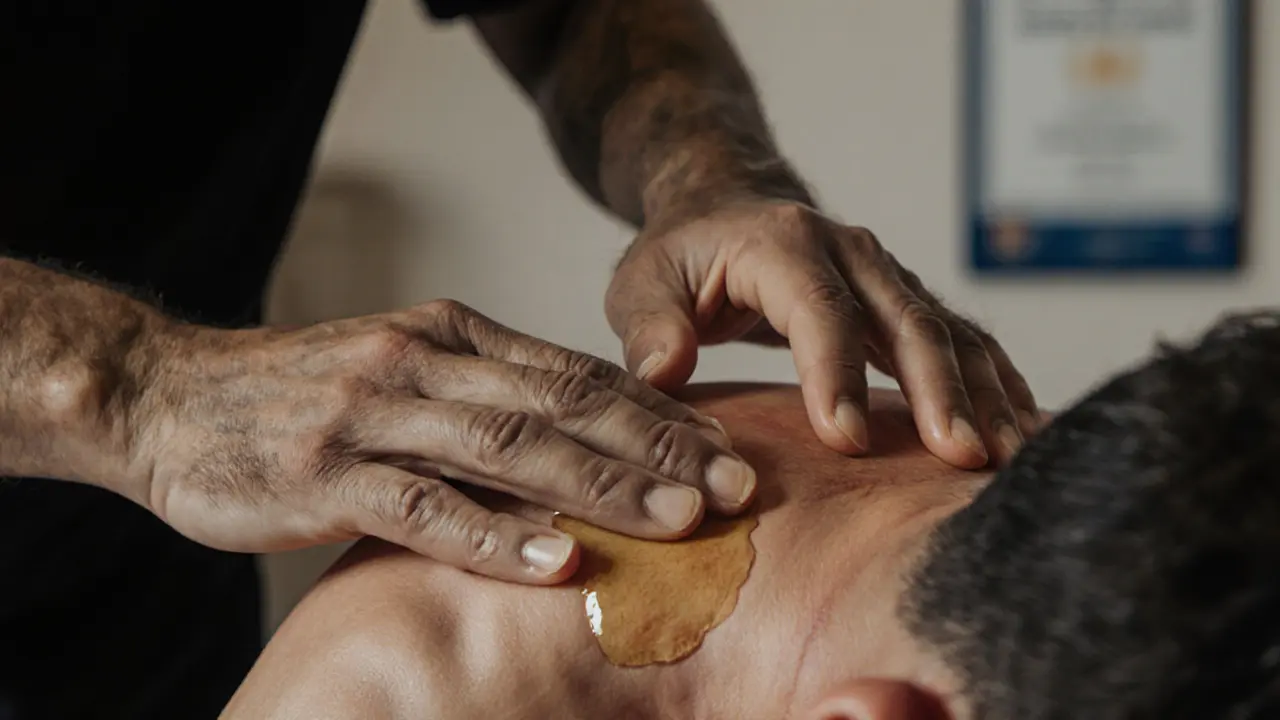Who Should Not Get a Deep Tissue Massage? Essential Safety Guidelines
When done right, a deep tissue massage can melt away chronic tension, ease stubborn muscle knots, and even improve posture. But it’s not for everyone. Think of it like a heavy workout for your muscles-powerful, effective, but potentially harmful if your body isn’t ready. In Dubai’s busy wellness scene, where massages are as common as coffee, knowing who should skip this therapy isn’t just helpful-it’s critical. This guide breaks down exactly who should avoid deep tissue massage, why, and what safer alternatives exist.
Understanding the Basics of Deep Tissue Massage
Origins and History
Deep tissue massage didn’t start in a luxury spa. It evolved from traditional manual therapies used by athletes, soldiers, and physical therapists to treat injuries and chronic pain. In the early 20th century, practitioners began applying slower, deeper pressure to reach the layers of muscle and fascia beneath the surface. Unlike Swedish massage, which focuses on relaxation, deep tissue targets adhesions-tight bands of tissue that form after injury or overuse. It’s rooted in biomechanics, not just comfort.
Core Principles or Components
The technique uses slow, deliberate strokes with fingers, thumbs, or elbows to apply firm pressure. The goal isn’t to make you cry-it’s to break up scar tissue and realign muscle fibers. Therapists often work along the grain of the muscle, using friction and kneading to release tension. Sessions usually focus on specific problem areas like the lower back, neck, or shoulders. It’s not a full-body pampering session; it’s targeted rehabilitation.
How It Differs from Related Practices
Many people confuse deep tissue massage with Swedish massage or sports massage. Here’s how they stack up:
| Practice | Key Feature | Primary Benefit |
|---|---|---|
| Deep Tissue Massage | Slow, intense pressure targeting deep muscle layers | Breaks down chronic muscle adhesions |
| Swedish Massage | Light to medium pressure, flowing strokes | Relaxes the nervous system |
| Sports Massage | Dynamic, movement-based techniques | Prepares or recovers muscles for activity |
Who Can Benefit from Deep Tissue Massage?
People with long-term muscle stiffness, athletes recovering from strain, or those with posture-related pain often see real results. Office workers with tight shoulders, dancers with hip tension, or anyone with persistent lower back pain can benefit. But the key is having healthy tissue underneath. If your body is inflamed, injured, or compromised, this massage can do more harm than good.
Benefits of Deep Tissue Massage for the Body
Chronic Pain Relief
Studies suggest deep tissue massage helps reduce chronic pain by lowering cortisol levels and increasing serotonin. For people with conditions like fibromyalgia or osteoarthritis, it can ease discomfort without medication. One regular client in Dubai, a 52-year-old teacher with years of slouching at a desk, reported a 60% drop in neck pain after six sessions-combined with stretching and posture correction.
Improved Mobility and Flexibility
When muscles are stuck in a contracted state, movement becomes restricted. Deep tissue work helps restore natural range of motion. Many physical therapists in Dubai use it alongside rehab programs for patients recovering from surgery or injury. Think of it as resetting your body’s tension settings.
Reduced Inflammation
Chronic muscle tension can trigger low-grade inflammation. Deep tissue massage increases blood flow, helping flush out metabolic waste and reduce swelling. This isn’t just about feeling better-it’s about protecting your joints and connective tissues over time.
Stress Reduction
Even though it’s intense, deep tissue massage activates the parasympathetic nervous system. After a session, many people report better sleep, lower anxiety, and clearer thinking. It’s not a spa day, but it’s still deeply calming for the mind.

What to Expect When Engaging with Deep Tissue Massage
Setting or Context
Expect a quiet, warm room with dim lighting. The table is firm-not plush. You’ll be draped in towels, with only the area being worked on exposed. Therapists often use oil or lotion to reduce friction. In Dubai’s high-end spas, you might find heated tables or aromatherapy, but the core technique stays the same: focused, deliberate pressure.
Key Processes or Steps
A typical session starts with a brief consultation. The therapist asks about your pain points, injuries, and medical history. Then they begin with lighter strokes to warm up the tissue. Once muscles are relaxed, they move into deeper work-often in 5-10 minute segments per area. You might feel a burning or aching sensation, but it shouldn’t feel sharp or unbearable. Breathing deeply helps you tolerate the pressure.
Customization Options
Good therapists adjust pressure based on your feedback. Some prefer more intensity; others need gentler work. Sessions can focus on one area (like the back) or cover multiple zones. Duration usually ranges from 60 to 90 minutes. You can also request modifications if you’re sensitive to touch or have scar tissue.
Communication and Preparation
Speak up. If it hurts too much, say so. A good therapist will never ignore your cues. Drink water before and after to help flush out released toxins. Avoid heavy meals two hours before. Wear comfortable clothes to your appointment-you won’t need to change much, but loose attire helps.
Safety and Ethical Considerations
Choosing Qualified Practitioners
Not all massage therapists are trained equally. Look for certifications from recognized bodies like the International Massage Association or the Dubai Health Authority’s licensed providers. Ask about their experience with deep tissue specifically. A therapist who’s only done Swedish massage shouldn’t be applying deep pressure to your spine.
Safety Practices
Hygiene matters. The table should be cleaned between clients, and linens should be fresh. The therapist should wash hands before and after. Consent is non-negotiable-you should always know what’s being done and where. If someone starts working on an area you didn’t agree to, stop them immediately.
| Practice | Purpose | Example |
|---|---|---|
| Ask about medical history | Prevent complications | Disclose if you have high blood pressure |
| Use clean linens | Prevent infection | Check for fresh, sealed covers |
| Check pressure constantly | Avoid tissue damage | Say ‘too deep’ if needed |
Setting Boundaries
Your body is yours. You can say no to any technique, even if it’s standard. You can request the therapist to avoid your neck, lower back, or abdomen. You can ask for a same-gender therapist if that makes you more comfortable. No reputable clinic will pressure you.
Contraindications or Risks
These are the situations where deep tissue massage is unsafe:
- Recent injury or surgery: Don’t get massaged over a fresh wound, fracture, or surgical site. Healing tissue is fragile.
- Blood clots or deep vein thrombosis (DVT): Deep pressure can dislodge clots, which can be life-threatening.
- Osteoporosis: Fragile bones can break under pressure. Gentle techniques are safer.
- Open wounds, rashes, or infections: Massage can spread bacteria or irritate skin.
- Severe inflammation or arthritis flare-ups: Aggressive work on swollen joints can worsen pain.
- Pregnancy (without prenatal training): Standard deep tissue work isn’t safe during pregnancy. Only certified prenatal therapists should proceed.
- Certain cancer treatments: Radiation or chemotherapy can make tissues sensitive. Always consult your oncologist first.
If you’re on blood thinners, have a bleeding disorder, or have uncontrolled high blood pressure, talk to your doctor before booking. The risk isn’t just discomfort-it’s real physical harm.
Enhancing Your Experience with Deep Tissue Massage
Adding Complementary Practices
Pair deep tissue work with stretching, yoga, or foam rolling. These help maintain the benefits between sessions. In Dubai, many clinics offer post-massage guided stretching as a free add-on. Hydration and rest are also key-your muscles need time to recover after deep work.
Collaborative or Solo Engagement
This isn’t a couple’s massage. Deep tissue is personal and focused. It’s best done alone, so you can communicate clearly with your therapist. Save the romantic massage for Swedish or hot stone.
Using Tools or Props
At home, use a foam roller or massage ball to maintain results. But don’t replace professional sessions with DIY pressure-your hands aren’t trained to target deep layers safely.
Regular Engagement for Benefits
One session won’t fix years of tension. Most people benefit from monthly or bi-monthly sessions, especially if they have physically demanding jobs or chronic pain. Think of it like going to the gym-consistency matters.

Finding Resources or Experts for Deep Tissue Massage
Researching Qualified Practitioners
In Dubai, check the Dubai Health Authority’s licensed provider list. Look for therapists with certifications in myofascial release or sports massage. Read reviews that mention pain relief, not just relaxation. Avoid places that promise instant results or use aggressive sales tactics.
Online Guides and Communities
Reputable sites like the American Massage Therapy Association (AMTA) offer free guides on what to expect. Avoid YouTube tutorials that show extreme pressure-those aren’t safe for beginners.
Legal or Cultural Considerations
Dubai has strict regulations on wellness services. Only licensed clinics can offer therapeutic massage. Avoid unlicensed operators in hotels or malls-they may not follow hygiene or safety standards.
Resources for Continued Learning
Books like The Muscle and Bone Palpation Manual by James Knight or Myofascial Release Techniques by John Barnes provide deeper insight. But leave the anatomy lessons to the pros-your job is to listen to your body.
FAQ: Common Questions About Deep Tissue Massage
Is deep tissue massage supposed to hurt?
It shouldn’t hurt-but it can feel intense. You might feel a deep ache or burning sensation, especially in tight areas. That’s normal. But sharp, shooting, or electric pain is not. If you feel numbness, tingling, or radiating pain, tell your therapist immediately. Good pressure feels like a ‘good hurt’-like stretching a tight muscle. Bad pain feels like something’s breaking. Trust your instincts.
Can I get a deep tissue massage if I’m pregnant?
Not unless your therapist is specifically trained in prenatal massage. Standard deep tissue work can be risky during pregnancy due to hormonal changes that loosen ligaments and increased blood flow. A certified prenatal therapist will use modified techniques, avoid certain pressure points, and position you safely. Never assume a regular massage therapist can handle pregnancy safely-even if they say they can.
How long do the effects last?
After one session, you might feel sore for 24-48 hours, then experience improved mobility and reduced pain for up to a week. For lasting results, you need regular sessions-usually every 3-6 weeks-combined with movement and stretching. Think of it like brushing your teeth: one session helps, but consistency keeps your body healthy.
What’s the difference between deep tissue and sports massage?
Sports massage is dynamic and movement-based-it’s used before or after exercise to prepare or recover muscles. Deep tissue is slow and static, designed to break down chronic scar tissue. A runner might get sports massage before a race and deep tissue weeks later to fix old knee injuries. One is performance-focused; the other is structural repair.
Can deep tissue massage cause bruising?
Yes, especially if you have thin skin, take blood thinners, or the therapist uses too much pressure. Light bruising isn’t uncommon and usually fades in a few days. But large, painful bruises or swelling are red flags. A good therapist will adjust pressure to avoid this. If you bruise easily, let them know upfront. It’s not a sign of effectiveness-it’s a sign you need gentler work.
Conclusion: Why Deep Tissue Massage is Worth Exploring
A Path to Lasting Relief
Deep tissue massage isn’t a luxury-it’s a tool for people living with chronic tension. When used correctly, it can restore movement, reduce pain, and improve daily function. But it’s not a cure-all. It works best when paired with good posture, movement, and rest.
Try It Mindfully
If you’re considering a session, start with a consultation. Talk to your doctor if you have any health concerns. Choose a licensed therapist. Communicate openly. And if something doesn’t feel right-stop. Your body knows what it needs.
Share Your Journey
Tried deep tissue massage? Share your experience in the comments-what worked, what didn’t, and what surprised you. Follow this blog for more honest, science-backed wellness tips tailored to life in Dubai.
Some links may be affiliate links, but all recommendations are based on research and quality.
Word count: 1,728
Suggested Images
- A therapist using elbow pressure on a client’s lower back, with towels draped
- Close-up of hands applying deep pressure to a tense shoulder
- Person stretching gently after a massage, smiling
- Side-by-side: a person with slouched posture vs. upright posture after therapy
- License certificate of a Dubai Health Authority-licensed massage therapist
Suggested Tables
- Comparison of Massage Types (already included)
- Massage Safety Tips (already included)
- Who Should Avoid Deep Tissue Massage (could be added as a checklist-style table)









Rehan Rasheed
November 22, 2025 AT 03:16Danielle Yao
November 22, 2025 AT 19:47Also, please don't say 'flush out toxins'-that's pseudoscience. It's just lactic acid and metabolic byproducts. We're better than that.
Ross Silvis
November 23, 2025 AT 03:53Also, 'don't massage if you're pregnant'-newsflash, that's been common sense since 1987. This article reads like a Wikipedia page written by a bored intern.